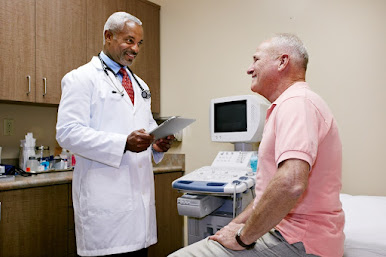
Last month, I attended three
separate zoom webinars on the topic of older adults and healthcare. Dr. Mary
Tinetti, geriatrician at Yale University School of Medicine, spoke on the topic
of “Identifying Health Priorities.” Dr. Donald Melady leads the Geriatric
Emergency Medicine program at Mt. Sinai, and he is an Associate Professor of
Emergency Medicine at the University of Toronto. He spoke on the topic of “Care
of Older Adults in Emergency Departments.” Dr. Andrea Wershoff Schwartz is
an assistant professor of medicine at Harvard University and geriatrician at VA
Boston Healthcare System, where she serves as Associate Director for Clinical
Innovation in the New England Geriatric Research Education and Clinical Center
(GRECC), and as a leader in the Age-Friendly Health Systems initiative. The
focus of her discussion was “Age-Friendly Care in Health Settings.”
My
aim is to share their main points and to consolidate common themes that emerged
from their talks. All three are passionate about the need for more
geriatricians and geriatric support staff, as well as providing a holistic
approach and reducing ageism in healthcare delivery.
While
all of three emphasized the importance of age-friendly care and identifying
patient goals, I realized that my own medical experiences have not embraced
this attitude. While most of the physicians I have encountered do not display
ageist attitudes, but the frontline clinical staff remain rude and harried. They
often talk down to me, talk loudly, or ignore me. When physicians and nurses
embrace age-friendly care, and their support staff does not, only half of the
problem is solved. The behaviors and attitudes of the clinical support staff impact
the overall patient experience. Solving the burnout issue should be a priority,
or else all of this is just talk. I have attributed it to extreme burnout, but
that will be discussed in another blog.
Although
older adults are the core group of patients requiring medical care, most
physicians have not learned much about them. In some medical schools,
geriatrics are part of the regular rotations but at most schools, it is not a
required specialty rotation. Physicians are unaware of how traumatic injury is
different or how medicines must be adjusted for their older patients. Dr.
Melady suggested that training is needed not just for physicians and the
general practice nurse, but a trained and educated clinical staff is also
needed. In addition, Dr. Melady stated that we need advanced practice nurses,
occupational therapists, physical therapists, and social workers with geriatric
competencies. Screening practices impact treatment. For example, the level of
frailty has an enormous impact on health outcomes. A robust 90-year-old with
pneumonia and a frail 68-year-old with pneumonia are vastly different. The
frail pneumonia patient is more likely to be hospitalized, may require a
nursing home after discharge, and may be delusional.
Even
changing the physical environment in the emergency department makes a
difference. Older adults often receive care with a family member present. Have
two chairs in the exam room for the extra person. Have food and drinks
available. Have a clock in every room, turn off beeping monitors, have exam
rooms with closing doors instead of being separated by curtains, and get people
out of the halls. Advances are happening in caring for geriatric patients in
emergency rooms. There are now 520 emergency departments accredited for older
adults and twenty more are in the process of accreditation.
Dr.
Schwartz identified health inequities in healthcare settings including stigma,
assumptions, health goals, undertreatment, and overtreatment of older people.
Like Dr. Melady, she sees lots of missed opportunities in medical education.
There is no recruitment of medical students into geriatrics, and geriatrics is
not usually included in resident rotations, while other specializations on the
rotation include surgery, neurology, orthopedics, and pediatrics. Mt. Sinai has
a one-month rotation for geriatrics that includes PACE (Program of
All-Inclusive Care for the Elderly), home visits, and so forth.
Dr.
Schwartz illuminated the importance of making changes that benefit all people,
not just older people. Examples are curb cuts on sidewalks and printed health
information in 16-point font. Older adulthood spans about half a century and
medical care should focus on healthy aging. She also compared fit older adults
to frail ones. While healthy older adults are engaged and exercise, a patient
the same age may be frail, but frailty must be measured and there is a spectrum
of frailty. Some patients go in and out of frailty, but frailty leads to
further health losses and risk of death. “Age Friendly Care” in health settings
includes four cornerstones: Mobility and function, medication, what matters,
and mentation (assessing mood and memory).
While
age-friendly initiatives are a step toward exemplary care, identifying health
priorities was the focus of Dr. Tinetti’s discussion. She promotes asking older
adults their health goals. It may not be the case that a condition is curable,
but a vast majority of older patients are able to identify realistic,
achievable goals. They want to be productive, independent, and retain autonomy.
The doctor and patient must discuss life values and apply that to health
outcomes that are specific and actionable. For example, an older adult may
express a desire to walk up to her apartment, live without pain, and not get
out of breath.
The
consensus was that we must prioritize outcomes to improve outcomes. Ask older
patients their health goals. Focus on what matters to older adults instead of
simply treating a condition. As one physician put it, these changes take time.
“It takes a long time to turn a battleship.”
Resources:
Template
for Corporate and Internal Documents (IT Manual, Board Meeting Materials) –
Accessible (ihi.org)
https://patientprioritiescare.org/
https://myhealthpriorities.org/



